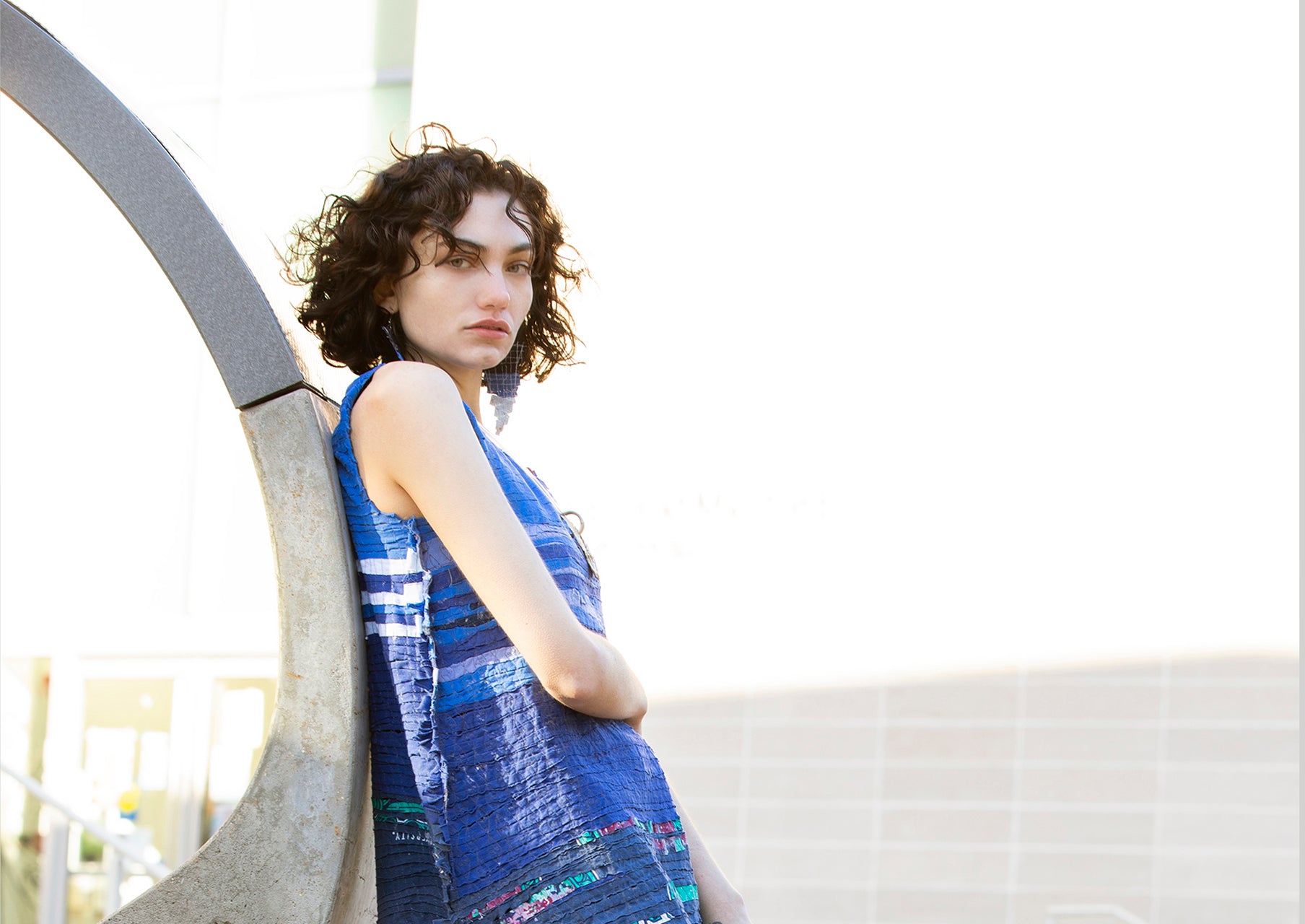About RECLÉM

The Makers
The name, RECLÉM comes from an academic collaboration between Dr. Mary Ruppert-Stroescu and her then students. The RE- was inspired by our work to reuse textiles, and the CLÉM comes from: (C) Carissa Gabhieri,(L) Lynae Dowdell, (É) Elizabeth Schrantz, and (M) Mary
Over the course of four years, these students worked with Dr. Mary to develop this patent for Textile repurposing and sustainable garment design: https://patents.google.com/patent/US20180125139A1/en
While Carissa, Lynae, and Elizabeth are still hearty supporters of the RECLÉM concept, their careers have taken them in different directions, and Dr. Mary is the sole motor behind the RECLÉM movement described on this website.
All of the products on the RECLÉM website were made in the USA, specifically in the Midwest: Missouri and Oklahoma. The materials re-used are also sourced in the USA.
Dr. Mary is a Designer in Residence at Stars Design Group Corporate Headquarters in St. Louis, Missouri, where her RECLÉM studio is located. She is also an Associate Professor in the Sam Fox School of Design and Visual Arts at Washington University in St. Louis.
Technology for the efficient execution of the Textile repurposing and sustainable garment design patented process is constantly being developed, often with the collaboration of WashU engineering students under the guidance of senior lecturer Jackson Potter.
RECLÉM Founder
Dr. Mary Ruppert-Stroescu
Dr. Mary is a Designer in Residence at Stars Design Group Corporate Headquarters in St. Louis, Missouri, where her RECLÉM studio is located. She is also an Associate Professor in the Sam Fox School of Design and Visual Arts at Washington University in St. Louis.
OUR MISSION
"Waste not, Want not."
RECLÉM is a movement with a mission to reduce textile waste.

The Motivation
Since the beginning of time, civilizations engaged in what we call today sustainable practices; Not wasting and reusing was essential for survival. For example, today my depression-era parents would be considered number-one sustainable masters, but the motives behind their no-waste and reuse lifestyle didn’t have anything to do with this sustainability movement of today; the origin was the lived deprivations of their childhood.
Thus, my main motivation to develop RECLÈM comes from my mom's saying: Waste not, Want not.
Our current wasteful habits are unprecedented. In the US alone, the average per person of textile waste is 70 pounds. Globally we see 13 million metric tons of textile waste generated annually.
RECLÉM is a movement with a mission to reduce textile waste. Reducing textile waste is important because reduction of textile waste impacts water use, consumption of energy and natural resources, fossil fuel use, pollution, and landfill content. Focusing on textile waste is significant, as the textile and apparel industry is second only to the automotive industry in terms of economic impact.
In the US, textile and apparel production in 2017 equaled Two hundred sixty-seven thousand, four hundred seventy three billion dollars (a number I had to write out to say correctly)
And roughly Nineteen billion pieces of clothing were sold in the US in 2017.
$267,573,000,0000,000 BILLION DOLLARS IN 2017 FOR US TEXTILE & APPAREL PRODUCTION
$19,000,000,000 Billion dollars of clothing sold in the U.S.
The Method
The patented “Textile repurposing and sustainable garment design” method provides a roadmap for how designers and manufacturers can deconstruct and reuse discarded textile products, and add further value by reassembling—or “upcycling”—them into something fresh and new.
The first step is to collect fabric and slice it into strips, squares, or other configurations. Once cut, the fabric pieces are laid into a surface design within the garment pattern shape on thin, biodegradable film. This holds the design in place while pieces are stitched together. When the fabric is washed, the film dissolves and the sections are ready to assemble.
There are crafters who stitch over film, and there are bespoke designers who cut up T-shirts and knit with them. What is unique here is the full sequence. There is no other process for breaking down a textile while maintaining its integrity; designing a new piece within the pattern; stitching it together; dissolving it; and then sewing the finished garment.
The Process

